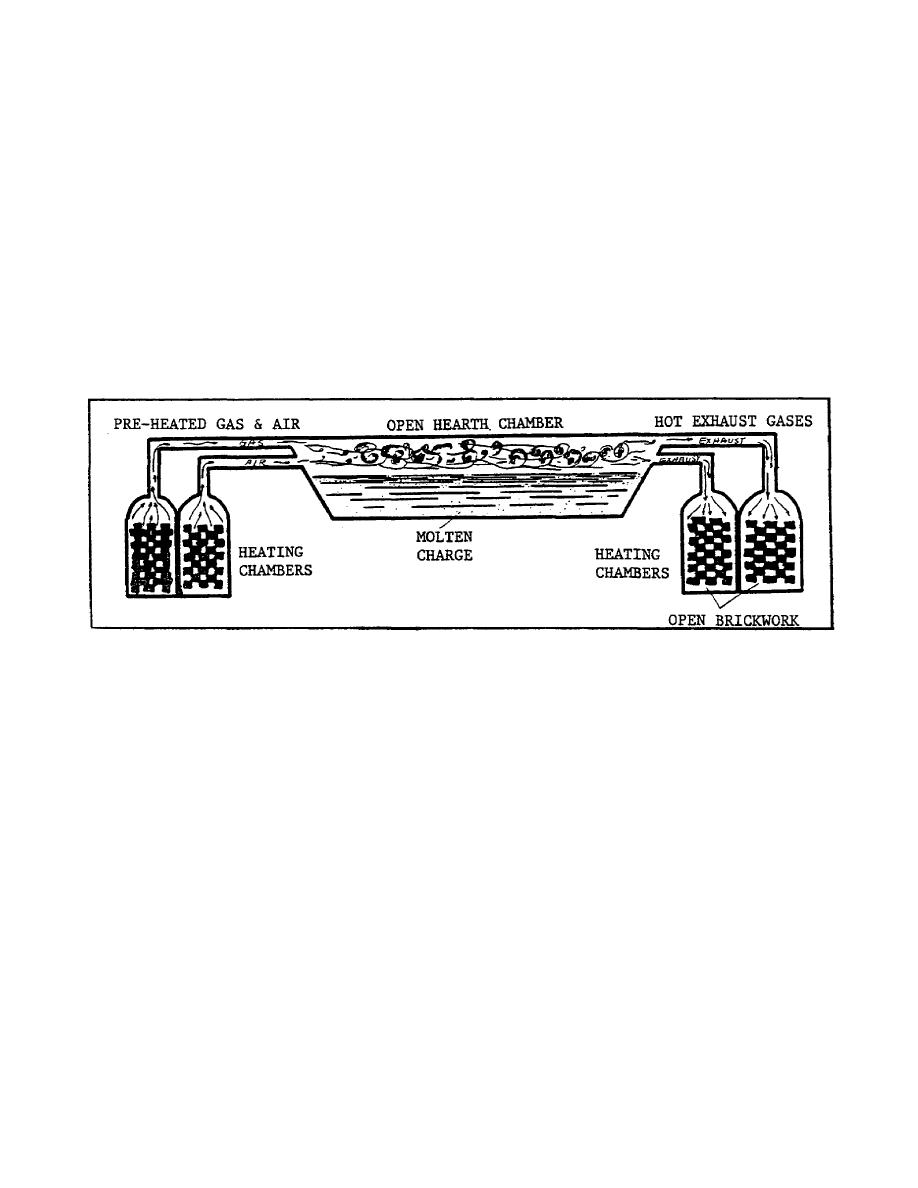
(c) Major recognition features of open-hearth furnaces include (Figure 2-
65):
Usually the largest single building in the steel complex
Large, long steel frame structure
Tall stacks along one side usually indicating the number of hearths
White smoke emanating from stacks is characteristic of atmospheric open-
hearth process, while red or orange smoke is indicative of the oxygen
open-hearth.
Scrap steel stockpile and charge preparation building.
NOTE: Open-hearth furnaces are the largest buildings in a steel mill
complex,
easily identified by a row of stacks along one side of the building.
Figure 2-65. Open-Hearth Layout.
(d) When the brickwork in the first set of heating chambers begins to cool,
the gas and air flow is reversed and the alternate, hot set performs the preheating
task. The combustion of the gas and air within the open-hearth chambers burns off
the excess carbon and some impurities while the limestone removes the rest of the
impurities and forms a slag.
(e) The fuel is normally either blast furnace gas or coke gas, and the air
is supplied by compressors located beneath the open-hearth floor.
A variation on
the basic open-hearth method is the oxygen open-hearth where oxygen is substituted
for atmospheric air. This substitution cuts the production time from 10 hours to
five. After the steel process is completed, a clay plug at the end of the hearth
basin is blown out with a shaped charge and the steel drained out into a large
ladle.
IT 0673
78



 Previous Page
Previous Page
